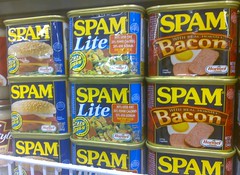
First, ask yourself this question. “Would your audience think that the messages you are sending are relevant?”
If you got your email, would you say “this is something I’m really interested in.” If not, then don’t send it because you’ll regret it. It’s so hard to get people to give up their legitimate email address. Don’t take it lightly.
People always ask me, “How often should I be emailing people?”
How often do you have something relevant to say? If you have something relevant every day, then you can hit them up every day. Think about Groupon or Living Social. Every day they have a deal. So they email you every day. Don’t send a quarterly email if you are doing it because it’s that time of the year. Send it because you have collected the best stuff of the quarter and your audience would really want to know about it.
Second, you are spamming people if they didn’t sign up for your email.
What’s that mean? You can’t have a student or intern harvest emails from websites or listservs and/or directories that aren’t yours. People need to sign up for your email.
It’s against the CAN-SPAM act and it can get the university “black-listed”, which can possibly shutdown the university’s email system. If someone gave you a card or you have personally met them (over the past 2 years) and you asked them about signing up, then by all means, add them to the list.
You also need to be cleaning up your list as well and making sure it has the right information. Remember there are a lot of people sending emails from the university and our constituents get upset if their names are misspelled or you aren’t taking them off the list when they have asked to be removed. If you have a list of alumni and you are sending them emails, you should make sure all of their info is correct. You can check this with alumni and their directory (which should be the most accurate).
Third, you should not be sending blast emails from your outlook or entourage or whatever client email system you are using.
If you are sending out a large bulk email (anything over 20 people or so) to a list, then use a third party system like Alumni’s imodules system or get your own like mailchimp. Every blast email should have an unsubscribe link (obvious to the user) and they should be able to unsubscribe to your list.
Fourth, you should make sure your email blasts have good clean copy – no typos or crappy grammar. Professional photos from photos.nd.edu are a good idea (don’t steal photos from Google Search or Bing – that’s illegal). If you are looking for free photos, you can use things like flickr.com/creativecommons but make sure you give the correct credit to the individual.
Email is a great tool for communicating your message if used correctly.
Used incorrectly, it can damage your reputation and our brand.
If you want to know more, please contact me or Marketing and Communications Web team. We’d be happy to help.
Leave a Reply